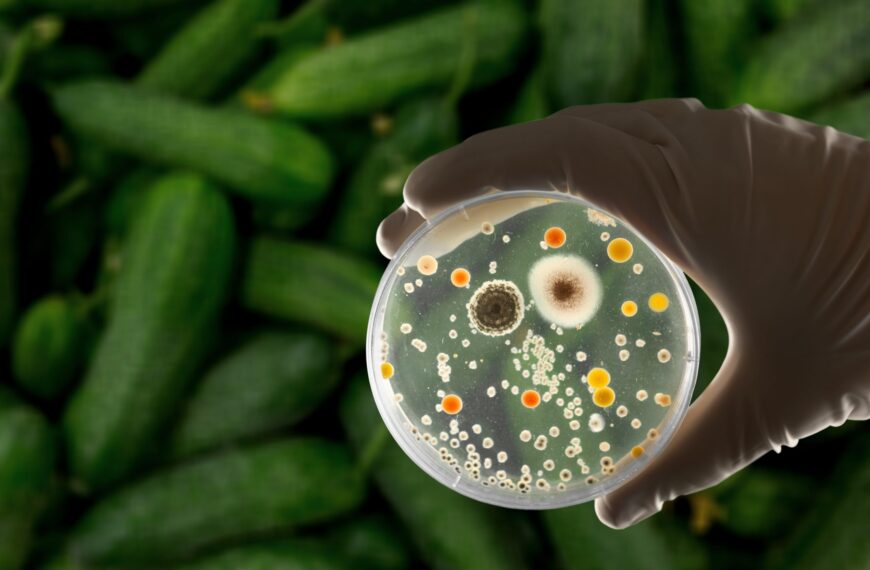Plastic-Eating Super Enzymes: The Biotechnological Revolution That Might Just Save Our Planet

Harshit Mittal
07 October 2025
Picture this: a single microscopic entity, a mere enzyme, with the power to devour plastic waste that’s been clogging our planet for decades. Sounds like science fiction? Well, it’s not. Enter the world of plastic-eating super enzymes – a groundbreaking biotechnological marvel that might just be the most exciting and transformative discovery of our time. These tiny warriors are not just cleaning up our mess; they’re rewriting humanity’s relationship with one of our most stubborn pollutants.
The Plastic Problem: A Crisis Decades in the Making
The world generates almost a million plastic bottles per minute; over 400 million tons of plastic are produced in a year, and less than a fraction of that is recycled. Where does the rest go? Either to the landfill, the ocean, or the incinerator, releasing their toxic chemicals into the atmosphere. Scientists estimate that it could take hundreds to thousands of years for plastic to break down naturally. Until now, the plastic problem seemed insurmountable, a ticking time bomb for ecosystems, wildlife, and even human health.
But what if we could turn the clocks back? What if the plastic waste that has already polluted our planet could be wiped out in days, even in hours?
Enter the Super Enzymes: Nature’s Unexpected Saviors
In 2016, scientists at a Japanese dump discovered a humble bacterium capable of degrading PET (polyethylene terephthalate), a general type of plastic used in water bottles and food packaging. The bacterium’s secret weapon? A discovery named PETase. PETase degrades thestrong chemical bonds in plastics to their building blocks, which are far easier to recycle.
By building upon that, scientists were able to bioengineer a mutant version of PETase, which, paired with another enzyme-MHETase to forms a super duo of enzymes. This sequential duo of enzymes carries out its function in a stepwise manner, first PETase initiating the degradation process, breaking down the PET into a simpler intermediate, and later MHETasecompleting it by breaking down the intermediate into basic components, terephthalic acid and ethylene glycol which can then be reformed into brand-new plastics with no quality loss.
Fast forward to the present day, and scientists have turbocharged those enzymes, making them 50 to 100 times more efficient than their natural counterparts. In turn, the super enzymes are now able to degrade plastics in a few hours rather than centuries and IMAGINE that- mountains of plastic wastes being digested and degraded within mere days into harmless organic compounds.
How the Enzymes Work: The Science behind Plastic Devouring
Plastic molecules are incredibly stable due to their strong carbon-carbon bonds, making themresistant to natural degradation. PETase tackles the challenge by binding onto the surface of PET plastic and breaking these bonds apart in a chemical reaction called hydrolysis. For those of you with a keener interest in its mechanics, what it does is it uses water molecules to sever the links in the polymer chain, effectively reducing the plastic into its core monomers.
What makes these super enzymes stand out is how specific and efficient they are. The various means of recycling usually involve high temperatures and toxic chemicals, but enzymes work under mild conditions, but these enzymes can work at room temperature, saving enormous amounts of energy and carbon emissions in the process.
Moreover, these enzymes are highly selective. They target only PET, leaving other materials untouched. This precision ensures that the recycling process is clean and efficient, with minimal waste or contamination.
Why This Changes Everything
Breaking it down, these super enzymes aren’t just some kind of scientific curiosity, they are a game-changer. Here’s why:
1. Rapid Decomposition: Plastics that would have taken centuries to degrade can now be decomposed in days. Imagine a landfill site transformed into fertile ground in a matter of months!
2. Infinite Recycling: The enzymes will break down the plastics to their core building blocks that can, in return, be used again for the production of new plastics without degradation in quality. This could usher in a true circular economy for plastics.
3. Ocean Cleanup: With further development, such enzymes could be deployed in cleaning up marine environments, targeting floating plastic islands and microplastics that threaten aquatic life.
4. Industrial Scalability: Bioreactors hosting these enzymes could replace traditional waste management systems, offering an environmentally friendly, efficient alternative to incineration and chemical recycling.
A World Transformed
Imagine a world where:
• Plastic waste no longer defiles pristine shores.
• Aquatic life thrives free of entanglement and ingestion.
• Toxic landfills shrink rather than grow, releasing space back into nature.
• Whole industries retool and welcome enzyme-based recycling as the new standard.
It’s not a pipe dream. Some pilot programs are already occurring, and researchers predict that its commercial applications could be viable within a few years. The global implications? A monumental reduction in greenhouse gas emissions, cleaner oceans, and a significant step toward solving one of the planet’s most pressing environmental crises.
The Challenges Ahead
As promising as this technology is, hurdles remain. Enzyme production scaled up to industrial levels is an investment. There is also a need for such enzymes to work in deep-sea cleanup and high-heat industrial settings. It isn’t easy to overcome the social and economic obstructions against the adoption of such disruptive solutions.
What You Can Do
As scientists perfect this game-changing technology, here are some things that YOU can do to help with plastic pollution:
1. Reduce Your Plastic Usage: Reduce plastic usage with the use of reusable items whenever possible.
2. Support Biotechnological Research: Keep pressing for more money and innovation into sustainable solutions.
3. Tell Others: Let the world know about the plastic-degrading enzymes.
4. Let It Be Recycled Properly: Allow plastics that you get rid of to be effectively processed in your area.
The Beginning of a New Era
The plastic-eating super enzymes are more than a scientific breakthrough but rather a beacon of hope at times when there’s ecological uncertainty. They represent humanity’s powers to innovate, rise above the problems we have created, and forge a path forward-a path toward a cleaner, greener future. Next time you see plastic waste, just remember those tiny, mighty enzymes that can turn the creeping menace into thin air. This might just signal the end of the plastic pollution era, thanks to these micro-heroes. And when that happens, it will be nothing short of a revolution.
Still interested? Visit the following links!






Leave a Reply
You must be logged in to post a comment.